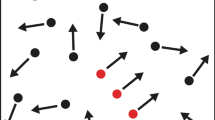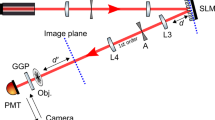Abstract
A SLIGHT adaptation of the explanation offered by your correspondent Mr. G. W. Butler (April 10, p. 137) appears to furnish a more natural solution of the problem. When an object at rest is seen against a background which it closely resembles there is nothing to differentiate between the object and the slight irregularities of the background. So soon as the object moves, such a differentiation becomes possible, the moving irregularities being now attributed to their real origin. It seems unnecessary to assume a “cumulative impression of contrast.”
This is a preview of subscription content, access via your institution
Access options
Subscribe to this journal
Receive 51 print issues and online access
$199.00 per year
only $3.90 per issue
Buy this article
- Purchase on Springer Link
- Instant access to full article PDF
Prices may be subject to local taxes which are calculated during checkout
Similar content being viewed by others
Author information
Authors and Affiliations
Rights and permissions
About this article
Cite this article
CAPON, R. Gain of Definition obtained by Moving a Telescope. Nature 91, 189–190 (1913). https://doi.org/10.1038/091189c0
Issue Date:
DOI: https://doi.org/10.1038/091189c0
Comments
By submitting a comment you agree to abide by our Terms and Community Guidelines. If you find something abusive or that does not comply with our terms or guidelines please flag it as inappropriate.



